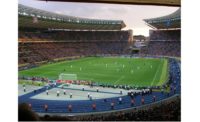Enterprise, or corporate, security – the practice of protecting a business’ employees, physical property and assets, and information systems – is a fast-growing business. Research firm IDC forecasts global spending on security-related hardware, software, and services to reach $103.1 billion this year, with the US leading the world in spending. While many companies, especially those in sensitive or high-value industries such as banking and government, have maintained secure workplaces for decades, the need to protect vulnerable workplaces across all verticals has become obvious, and subsequent investments have resulted in the hyper-secure, multi-layered environments many of us work in today.
Despite the nearly two decades of intense focus and heightened spending on enterprise security, opportunities still exist to enhance the ways in which we protect personnel and monitor business assets including critical infrastructure, office buildings, and inventory. Leveraging high-accuracy location technology, which can pinpoint workers and assets in real-time, including indoors and to the floor-level in high-rise offices, offers a new dimension in enterprise security, helping to drive efficiencies and lower costs.
Improving enterprise security with 3D location
An enterprise can benefit from high-accuracy 3D location in several ways, ranging from day-to-day worker safety, to office security, to tracking important corporate assets, as the following use cases illustrate:
Employee safety is a key driver for the adoption of new security technologies in the enterprise. Employee health and safety (EHS) spending, as tracked by research firm Verdantix, is expected to increase 4 percent in 2019, with 44 percent of decision makers planning to deploy digital sensors and 43 percent location-tracking wearables, all with the goal of improving employee security. Even though most enterprises require employees and guests to use an ID to access an office, once they have entered, their location, and the ability to be protected, is usually unknown. By utilizing a company-provided or personal wireless device, such as a smartphone, the enterprise can locate the employee, even at the floor-level in a downtown skyscraper. In the event of an emergency, for example a fire or intruder, the organization can identify which employees are in danger and direct help to them quickly while communicating to the employee what they should do.
In non-office settings, such as a factory or mine, 3D location offers a different type of security, related to the work itself, not outside impacts. Tragedies that occur all too regularly could be avoided or their impacts lessened if enterprises had the ability to locate endangered employees and direct them away from the source of danger. In addition, knowing which employees are in a given area of a factory or mine at any given time helps the enterprise ensure it is allocating its resources efficiently and controlling costs, by reducing liability and avoiding worker compensation due to on-the-job injuries. Some organizations are even implementing location-enabled panic buttons so that the employee can take on an active role in summoning help in situations where a manager or security guard may not be aware of a developing incident.
Enterprises are also relying on location technology to track and monitor valuable assets, such as computers, machinery, and high-value inventory. What is at stake is not just the cost of the assets themselves, but also lost productivity when employees must search for the item or can’t do their job without it, as well as even more costly loss of customer and corporate data contained on lost equipment. By deploying an IoT (Internet of Things) sensor and monitoring the location of valuable assets in real-time, enterprises are making it easier for employees to do their jobs. Applications exist that allow the setting up of virtual geo-fences so that security is alerted when assets are taken outside of an established range or to a different floor in a high-rise building, all enabled by high-accuracy 3D location technology.
Assessing location technologies
Enterprises interested in 3D location have a variety of solutions to choose from, as new technologies have evolved which enable us to identify the location of people and things via a wireless device or sensor. These technologies vary considerably in terms of horizontal and vertical accuracy, ease of deployment, and relative cost. The table below outlines the relative attributes of each location solution.
![]()
For enterprises focused on a cost-efficient way to quickly deploy a 3D location capability across many offices simultaneously and to cover their entire workforce regardless of the type of wireless device being used, a software-based solution makes the most sense. This type of solution is already prevalent in specific vertical industries such as public safety, because of its reliability and universality – attributes which recommend it for enterprise organizations in other sectors.
Companies take security very seriously, as is evident in the billions of dollars spent in the past several years on making the enterprise more protected. Ensuring a safe environment for employees increases productivity, and keeping facilities and equipment secure reassures customers and partners. As technology evolves, enterprises are smart to continue to invest in their own capabilities, and 3D location can provide a major boost in enhancing enterprise security. This is good not only for the enterprise and its workforce, it’s also good for business.







